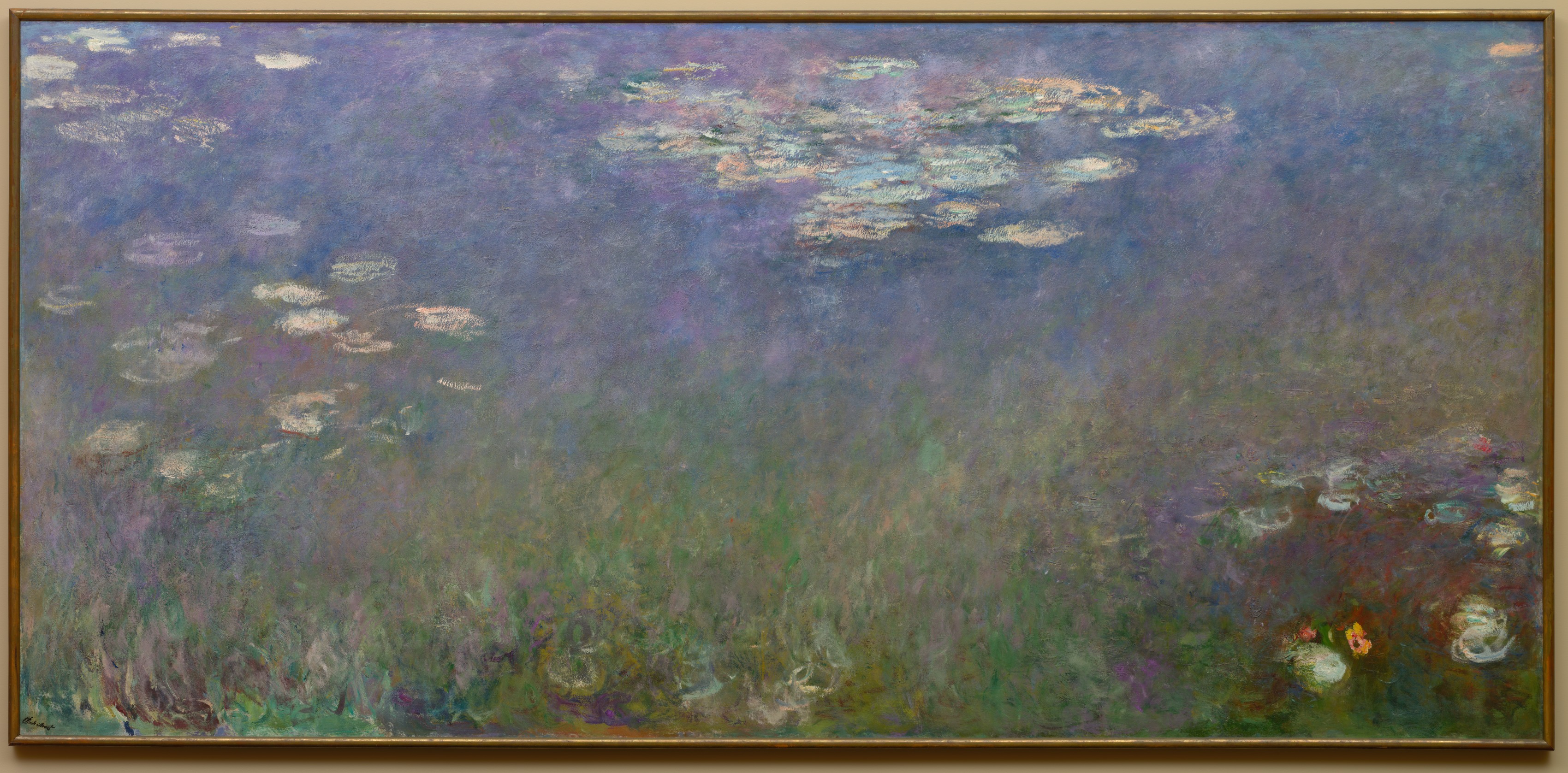Today is our last Sunday with the Cleveland's Museum of Art collection. We hope you enjoyed it. : ) Have a great Sunday! Tomorrow we start something absolutely special—don't forget to open the app!
Water lilies were a recurring theme in Monet's work: he painted around 250 water lily compositions. Monet spent the last 30 years of his life painting the lily pond at his home in Giverny, a small town on the river Seine, just north of Paris. While his initial exploration of the water lily theme (1902–1908) produced smaller works more descriptive of a garden setting, the later paintings focus on the water's shimmering surface, indicating the surrounding trees and lush bank only through reflections. Here reflection and reality merge in strokes of blue, violet, and green. Fronds of water plants sway underwater and passing clouds are reflected above. By 1915 Monet had conceived a plan, called his Grande Décoration, for arranging a series of monumental water lily paintings in an oval room, thus creating a continuous panorama that would surround and enclose the viewer in an environment of pure color. That installation is located in two oval rooms in the Musée de l'Orangerie in Paris. Cleveland's painting is the left panel of a three-part variation on this water lily theme. Its companions are now in the St. Louis Art Museum and the Nelson-Atkins Museum in Kansas City, Missouri.
P.S. Imagine how it would be to look through Claude Monet's eyes. You can check it out here!


 Claude Monet
Claude Monet